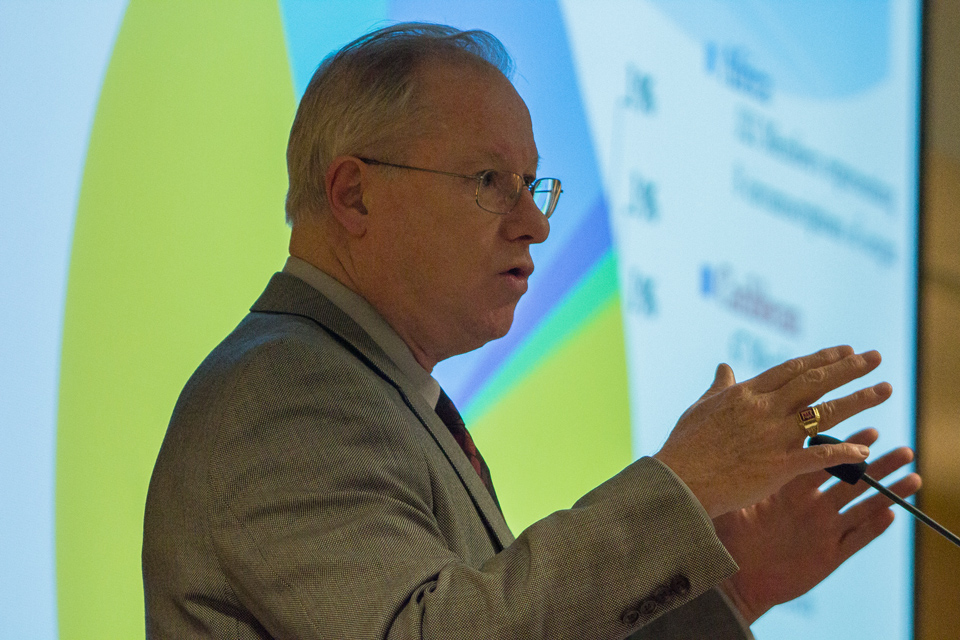10/11/2018
By Charles Megginson | Contributor
There’s no such thing as a free lunch – and if there’s no such thing as a free lunch, there’s definitely no such thing as free healthcare.
America is facing a crippling healthcare epidemic, fueling intense political debate over the direction we, as a nation, should go in guaranteeing quality, affordable healthcare. With costs skyrocketing, public support for government-subsidized or socialized medicine has surged.
Colloquially known as “Medicare for all,” the system would delegate the funding of healthcare to the government while leaving the practice of medicine in private hands. While founded in noble intentions, Medicare for all would not solve our country’s healthcare epidemic. Rather, it would decrease our quality of care, disadvantage individual medical practitioners, and sink our already-strapped federal budget deeper into debt. However, our current system is equally flawed. Rather than making the radical transition to socialized medicine, why don’t we explore the reasons healthcare and pharmaceuticals have become so expensive in the first place?
Proponents of Medicare for all argue that free-market healthcare has failed us, but the truth is, we haven’t had free-market healthcare since the advent of the health insurance market. In fact, the vast majority of money spent on healthcare isn’t going to the care itself.
The free-market can’t thrive given the existence of monopolies. Monopolies prevent innovation, reduce competition, inhibit innovation and create drug shortages. For example, saline, which costs approximately $1 per bag to produce, has been reported to cost patients between $500 and $1,000, according to the New York Times. Not surprisingly, there’s only one major producer of saline in the United States. Baxter, the leading manufacturer of saline, produces the compound in Puerto Rico. After the devastating hurricanes struck the small island in 2017, the United States faced a saline shortage, driving the costs up even further.
Saline costs so much because hospitals don’t get to set their own prices. Rather, they must go through middlemen, known as pharmaceutical benefit managers, or PBMs. PBMs negotiate the contracts between the manufacturers, the distributors and the healthcare providers. If pharmaceutical manufacturers and wholesalers pay the PBMs enough money, they’re offered uncontested contracts with the healthcare providers. This means that even if a cheaper version of a medication exists, healthcare providers must go with the more expensive version, as PBMs negotiate the bulk contracts. Even though PBMs never touch the product, they often skim off over 75 percent of the cost billed to insurers.
For example, an individual with diabetes pays, on average, $400 per month for insulin treatment. Of that $400, 75 percent of the money goes to the PBMs, healthcare providers and wholesalers, while only $100 goes to the manufacturer. This means that of the money diabetic patients pay for insulin, only 25 percent actually goes to the treatment, while the remainder goes to administrative overhead.
And when faced with life or death, diabetics don’t have much of a choice but to fork up the cash.
But, insurance will pay for it, right? It’s not that simple. In fact, insurance is a large reason healthcare costs have increased so dramatically. No longer do doctors need to compete for business, because when you need a sports physical, or a flu shot, or a cavity filled, (all very inexpensive procedures) health insurance pays for it. There’s no shopping around, there’s no looking for a better deal.
These cost increases have life-threatening consequences. If you have a severe allergy, you probably have an EpiPen. The EpiPen is an epinephrine injection, distributed by Mylan, which prevents anaphylactic shock when one is exposed to an allergen. Like saline, the drug in the EpiPen only costs about $1 to produce. Despite this, if you have insurance, the EpiPen will cost you $200 to $600 for a pack of two. If you don’t, it could run as much as $800-$1,200. And if you’re lucky enough not to need them, you’ll still have to throw them away after a year, because they expire and lose their effectivity. There must be a generic alternative, though, right? After all, epinephrine, also known as adrenaline, is a very common hormone and medication. Well, there is a generic. Guess who produces it – also Mylan.
These are just a few of the reasons socialized medicine would not solve the healthcare epidemic. When someone tries to sell the concept of socialized healthcare, they’re actually advocating for socialized health insurance. But if insurance is the predominant reason healthcare has become so expensive, how will socializing the practice mitigate the cost? It won’t. Instead, the cost will be transferred to the federal government.
We know, firsthand, the effect of federally subsidized programs on cost increases. Look no further than the inflation in college tuition since the federal government started subsidizing student loans. According to the Huffington Post, the cost of a college degree has increased 1,120 percent since 1978.
The same folks who advocate for government subsidized healthcare, advocated for government subsidized college tuition. How’s that working out? If my student loan balance is any reflection, I’d say not so well. Let’s learn from our mistakes, and address the root cause of our problems, instead of asking the government to pay for them.




